A New Presidential Memorial Stamp Is Waiting in The Wings
By John M. Hotchner
[It’s been about a year since George H.W. Bush, the 41st president of the United States, died, and several months since the U.S. issued a stamp for him.]
 I had the good fortune to meet him—twice—and I’m a fan. So I looked forward to the commemorative memorial stamp for him that was issued on his next birthday, June 12, 2019.
I had the good fortune to meet him—twice—and I’m a fan. So I looked forward to the commemorative memorial stamp for him that was issued on his next birthday, June 12, 2019.
This is a tradition that has its roots in the 19th Century, with the issuance of the first presidential mourning stamp of the United States in April, 1866, a 15¢ stamp in black (Scott #77, plus later grilled issues) honoring Abraham Lincoln; who had been assassinated a year earlier. The earliest known use, per Scott, is April 21, 1866.
A mourning stamp was a novelty in 1866, though earlier presidents had been included in the stamp program after their passing. But Lincoln s e t a n e w standard: a stamp in black, issued within a year of death, or shortly after. A use of his stamp, on a mourning cover, is shown in Figure 1.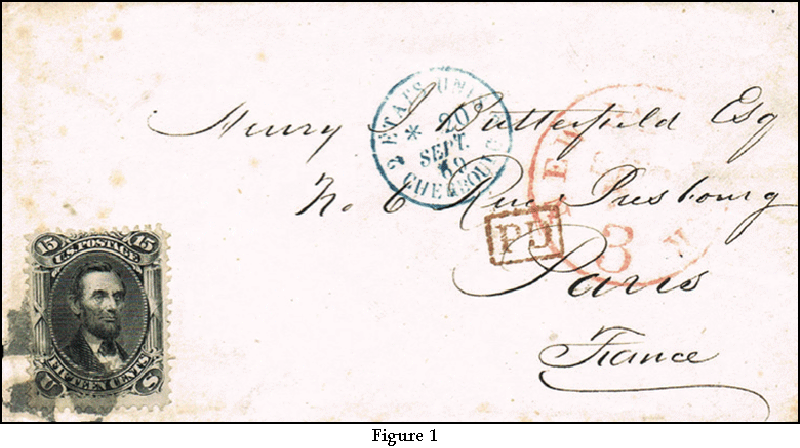
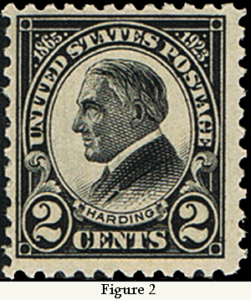 We would not see such an issuance again until the passing of Pres. Warren Harding from a heart attack on August 2, 1923. A mourning stamp in his honor (Figure 2)—a flat plate-printed, perf. 11 version (Scott #610)—was released just a month later, on Sept. 1, 1923. It was followed by three more versions (perf. 10 flat plate, imperf., and perf. 11 rotary press; Scott #s 611-613) within a couple of months.
We would not see such an issuance again until the passing of Pres. Warren Harding from a heart attack on August 2, 1923. A mourning stamp in his honor (Figure 2)—a flat plate-printed, perf. 11 version (Scott #610)—was released just a month later, on Sept. 1, 1923. It was followed by three more versions (perf. 10 flat plate, imperf., and perf. 11 rotary press; Scott #s 611-613) within a couple of months.
After this there was a hit-or-miss period. Woodrow Wilson, who passed away in 1924, after he left office, 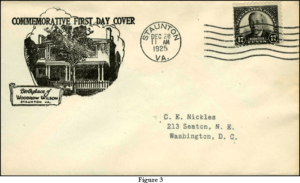 was given a 17¢ memorial stamp in black (Scott 623) almost two years after he died, seen in a first day cover, Figure 3. William Howard Taft whose presidency ended in 1913, left us on March 8, 1930, and was included in the Fourth Bureau issue with a brown 4¢ sheet stamp and a coil just three months later (Fig. 4)
was given a 17¢ memorial stamp in black (Scott 623) almost two years after he died, seen in a first day cover, Figure 3. William Howard Taft whose presidency ended in 1913, left us on March 8, 1930, and was included in the Fourth Bureau issue with a brown 4¢ sheet stamp and a coil just three months later (Fig. 4)
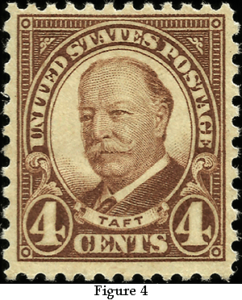 But Calvin Coolidge, who passed in 1933 was not placed on a stamp until the presidential issue of 1938, where he was the honoree on the $5 (Scott #834).
But Calvin Coolidge, who passed in 1933 was not placed on a stamp until the presidential issue of 1938, where he was the honoree on the $5 (Scott #834).
The next president to die was Franklin D. Roosevelt, on April 12, 1945; at the start of his fourth term. Four stamps were issued in his honor—none of them black—within a year of his death. The first was released on June 27, 1945; a 3¢ purple (which can be considered as a mourning color). It was followed by a 1¢ blue green, a 2¢ carmine rose, and a 5¢ bright blue (Scott #930-933). They broke the mold by including illustrations of more than just the picture of the president. See Figure 5 below.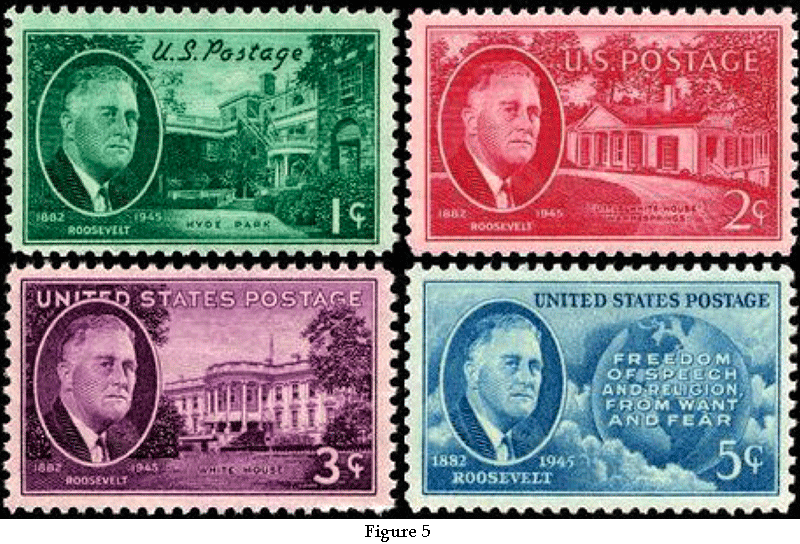
The next president to die was John F. Kennedy, the victim of an assassin, on November 22, 1963. And here is where the modern system of memorial stamps was inaugurated. On May 29, 1964, a 5¢ blue-grey commemorative was issued showing JFK and his eternal flame (Scott #1246, Figure 6). His birth date was May 29, 1917.
Figure 6 shows JFK on a Sc. 1246 FDC along with stamps for other assassinated Presidents: McKinley, Garfield, and Lincoln (Sc. 559, 558, 1036)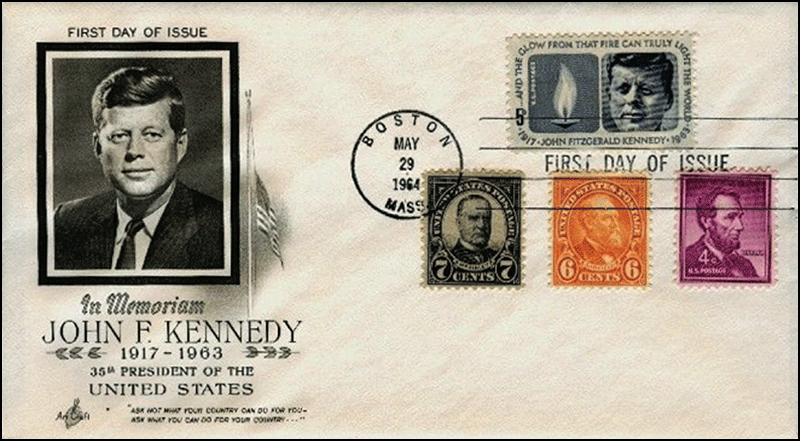
Presidential deaths after Kennedy, and the date of their memorial stamp (on or near their birthday), are shown here:
Name
Herbert Hoover
Dwight D. Eisenhower
Harry S. Truman
Lyndon B. Johnson
Richard Nixon
Ronald Reagan
Gerald Ford
George H.W. Bush |
Date of Death
Oct. 20, 1964
March 28, 1969
Dec. 26, 1972
Jan. 22, 1973
April 22, 1994
June 5, 2004
Dec. 26, 2006
Nov. 30, 2018 |
Date of Issue
Aug. 10, 1965
Oct. 14, 1969
May 8, 1973
Aug. 27, 1973
April 26, 1995
Feb. 9, 2005
Aug. 31, 2007
June 12, 2019 |
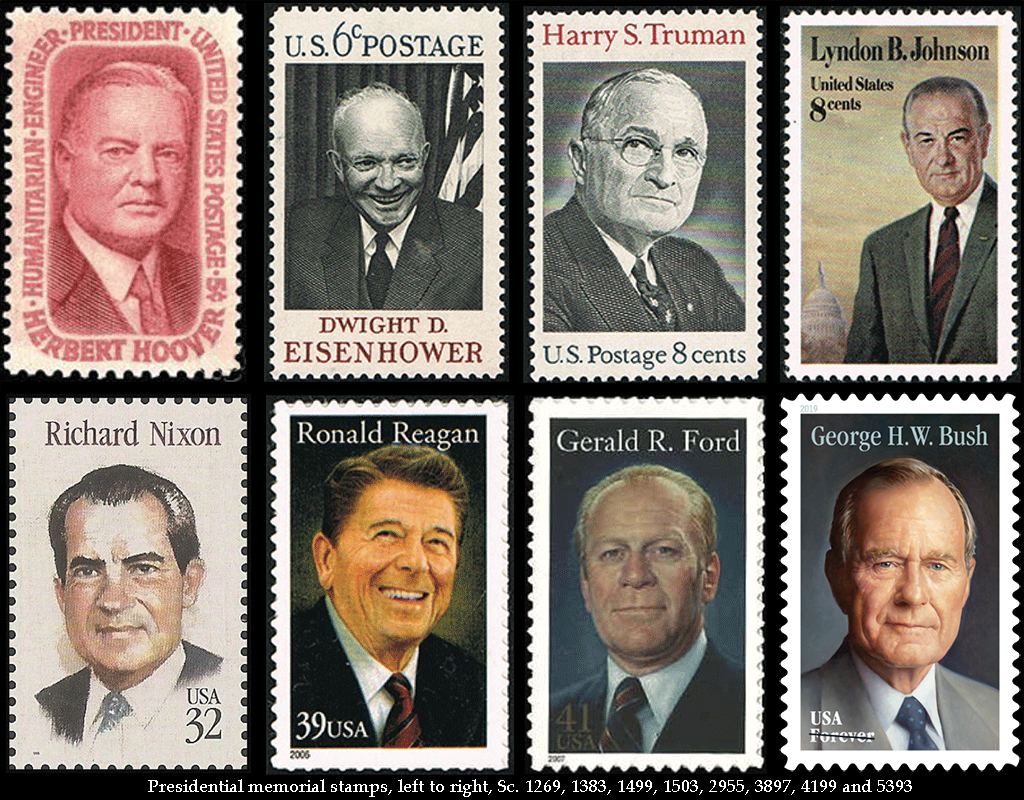 We are long past the times when the U.S. Postal Service was simply reactive to a presidential passing. Wouldn’t be prudent. They now have “in the bank” an approved image of each president who has left office, ready for use on the memorial stamp. It has been selected by the president himself, and discussed with the immediate family as well.
We are long past the times when the U.S. Postal Service was simply reactive to a presidential passing. Wouldn’t be prudent. They now have “in the bank” an approved image of each president who has left office, ready for use on the memorial stamp. It has been selected by the president himself, and discussed with the immediate family as well.
Also gone are the grim black stamps that celebrate death, in favor of brighter colorful portraits. This is not to say that all the presidential memorial stamps are beautiful—or popular. Richard Nixon’s stamp was not expected to do well, so the USPS ordered only 80 million printed. Compare that to the 511,750,000 stamps ordered for JFK, and 170 million for Ronald Reagan.
Should you wish to comment on this editorial, or have questions or ideas you would like to have explored in a future column, please write to John Hotchner, VSC Contributor, P.O. Box 1125, Falls Church, VA 22041-0125, or email, putting “VSC” in the subject line.
Or comment right here.
 Tyrannosaurus Rex:
Tyrannosaurus Rex:
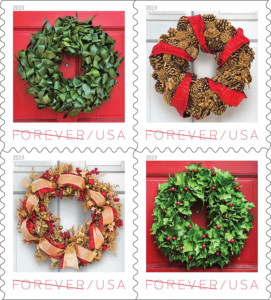 WASHINGTON — In the blink of an eye summer is over and now it’s fall. Before you know it, it will be time for the holidays again. Fortunately, the U.S. Postal Service has your back with all the mailing deadlines you need to know for the expected delivery of cards and gifts to your loved ones, whether they’re overseas or across the country.
WASHINGTON — In the blink of an eye summer is over and now it’s fall. Before you know it, it will be time for the holidays again. Fortunately, the U.S. Postal Service has your back with all the mailing deadlines you need to know for the expected delivery of cards and gifts to your loved ones, whether they’re overseas or across the country. Busiest Mailing and Delivery Days
Busiest Mailing and Delivery Days WASHINGTON — The United States Postal Service filed notice with the Postal Regulatory Commission (PRC) today of price changes to take effect Jan. 26, 2020.
WASHINGTON — The United States Postal Service filed notice with the Postal Regulatory Commission (PRC) today of price changes to take effect Jan. 26, 2020. Postal Service does not add surcharges for fuel, residential delivery, or regular Saturday or holiday season delivery.
Postal Service does not add surcharges for fuel, residential delivery, or regular Saturday or holiday season delivery.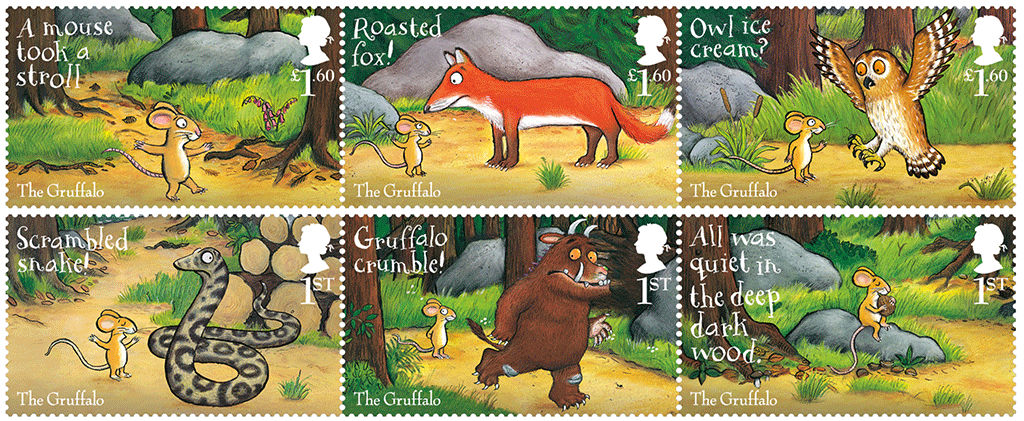 The Gruffalo has won numerous awards; it was the UK’s best-selling picture book of 2000, won the Blue Peter Best Book To Read Aloud award and was voted Best Bedtime Story in
The Gruffalo has won numerous awards; it was the UK’s best-selling picture book of 2000, won the Blue Peter Best Book To Read Aloud award and was voted Best Bedtime Story in 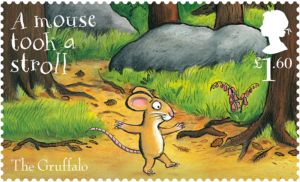 a BBC poll of 2009. It has been adapted into theatre productions with runs in the West End, Broadway and the Sydney Opera House. It has also been adapted into an Oscar nominated, animated film.
a BBC poll of 2009. It has been adapted into theatre productions with runs in the West End, Broadway and the Sydney Opera House. It has also been adapted into an Oscar nominated, animated film. A full set of all 10 stamps, available in a Presentation Pack (which includes a Gruffalo snakes and ladders game), retails at £12.20.
A full set of all 10 stamps, available in a Presentation Pack (which includes a Gruffalo snakes and ladders game), retails at £12.20.
 WASHINGTON — The United States Postal Service is increasing the safety and security of its collection box procedures through a modification of the long-standing Aviation Mail Security Rule, which was established in August 1996 and called for all packages weighing 16 ounces to be presented in person to a postal clerk or a letter carrier. The action was taken to enhance security measures and to protect the public, postal employees and postal contractors who transport the U.S. Mail.
WASHINGTON — The United States Postal Service is increasing the safety and security of its collection box procedures through a modification of the long-standing Aviation Mail Security Rule, which was established in August 1996 and called for all packages weighing 16 ounces to be presented in person to a postal clerk or a letter carrier. The action was taken to enhance security measures and to protect the public, postal employees and postal contractors who transport the U.S. Mail.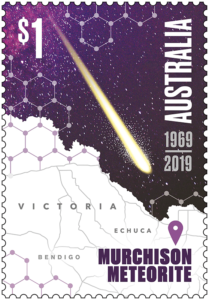 Australia Post is releasing a commemorative stamp to mark the 50th anniversary of the arrival of one of the world’s most scientifically acclaimed meteorites, the Murchison meteorite.
Australia Post is releasing a commemorative stamp to mark the 50th anniversary of the arrival of one of the world’s most scientifically acclaimed meteorites, the Murchison meteorite.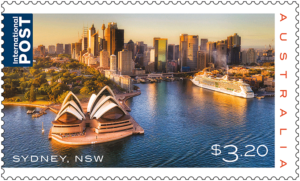 Australia Post is celebrating two of our beautiful cities, releasing two International Post stamps featuring Sydney and Perth. The stamp issue is the second in a series featuring Australian cities, with the first issue in 2018 featuring Adelaide, Brisbane, and Melbourne.
Australia Post is celebrating two of our beautiful cities, releasing two International Post stamps featuring Sydney and Perth. The stamp issue is the second in a series featuring Australian cities, with the first issue in 2018 featuring Adelaide, Brisbane, and Melbourne.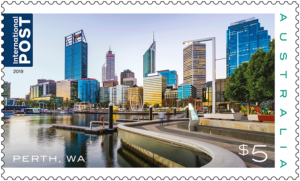 The largest state by area, Western Australia occupies approximately a third of the continent. Its capital city Perth, located on the beautiful Swan River and bounded by the Indian Ocean, was established in 1829 on the lands of the Whadjuk Noongar people. With around 2.3 million people, Perth is the fourth largest city in Australia. The stamp shows Elizabeth Quay, named in honour of Queen Elizabeth II during her Diamond Jubilee.
The largest state by area, Western Australia occupies approximately a third of the continent. Its capital city Perth, located on the beautiful Swan River and bounded by the Indian Ocean, was established in 1829 on the lands of the Whadjuk Noongar people. With around 2.3 million people, Perth is the fourth largest city in Australia. The stamp shows Elizabeth Quay, named in honour of Queen Elizabeth II during her Diamond Jubilee.
 Experience the nature – trees and leaves at the center of the design of the sensory and associative nature experience. When selecting the photographic material, Janse searched for autumn colors that are as close as possible to each other. “I stayed away from the romantic, multi-colored autumn hues, but chose greenish and orange-colored brown. They are the first steps in the rotting process that nature simply undergoes in the autumn. ”
Experience the nature – trees and leaves at the center of the design of the sensory and associative nature experience. When selecting the photographic material, Janse searched for autumn colors that are as close as possible to each other. “I stayed away from the romantic, multi-colored autumn hues, but chose greenish and orange-colored brown. They are the first steps in the rotting process that nature simply undergoes in the autumn. ”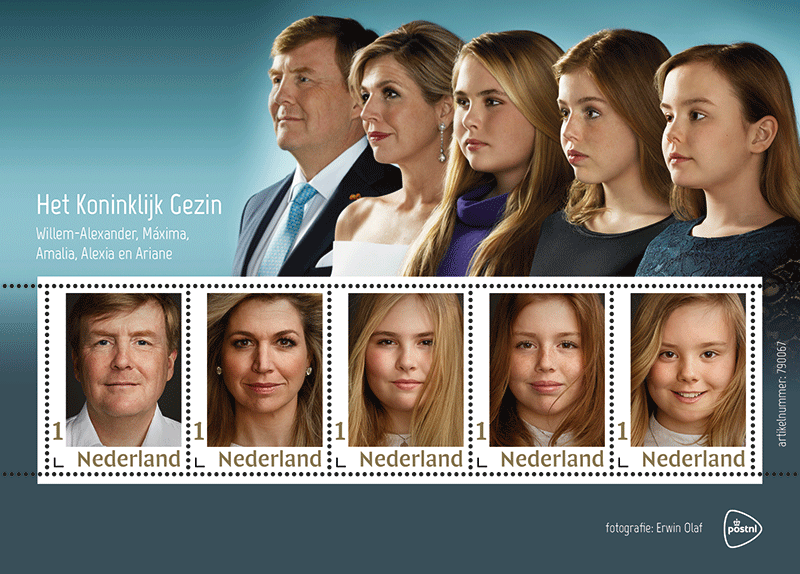
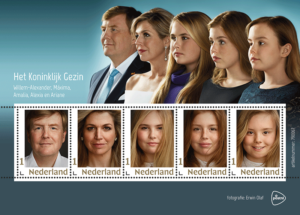 PostNL very much wanted to put the informal photos of the royal family on stamps, explains Stephan van den Eijnden, commercial director Mail of PostNL. “On the 5 stamps released earlier this year with Olaf’s most important work, there was no room for it. Now these accessible and penetrating photos get all the attention they deserve. Today’s issue is also in line with our tradition of regularly commissioning high-profile artists for stamp designs. For example, the permanent stamps with King Willem-Alexander were designed by Studio Job, based on a portrait by photographer Rineke Dijkstra. ”
PostNL very much wanted to put the informal photos of the royal family on stamps, explains Stephan van den Eijnden, commercial director Mail of PostNL. “On the 5 stamps released earlier this year with Olaf’s most important work, there was no room for it. Now these accessible and penetrating photos get all the attention they deserve. Today’s issue is also in line with our tradition of regularly commissioning high-profile artists for stamp designs. For example, the permanent stamps with King Willem-Alexander were designed by Studio Job, based on a portrait by photographer Rineke Dijkstra. ” I had the good fortune to meet him—twice—and I’m a fan. So I looked forward to the commemorative memorial stamp for him that was issued on his next birthday, June 12, 2019.
I had the good fortune to meet him—twice—and I’m a fan. So I looked forward to the commemorative memorial stamp for him that was issued on his next birthday, June 12, 2019.
 We would not see such an issuance again until the passing of Pres. Warren Harding from a heart attack on August 2, 1923. A mourning stamp in his honor (Figure 2)—a flat plate-printed, perf. 11 version (Scott #610)—was released just a month later, on Sept. 1, 1923. It was followed by three more versions (perf. 10 flat plate, imperf., and perf. 11 rotary press; Scott #s 611-613) within a couple of months.
We would not see such an issuance again until the passing of Pres. Warren Harding from a heart attack on August 2, 1923. A mourning stamp in his honor (Figure 2)—a flat plate-printed, perf. 11 version (Scott #610)—was released just a month later, on Sept. 1, 1923. It was followed by three more versions (perf. 10 flat plate, imperf., and perf. 11 rotary press; Scott #s 611-613) within a couple of months. was given a 17¢ memorial stamp in black (Scott 623) almost two years after he died, seen in a first day cover, Figure 3. William Howard Taft whose presidency ended in 1913, left us on March 8, 1930, and was included in the Fourth Bureau issue with a brown 4¢ sheet stamp and a coil just three months later (Fig. 4)
was given a 17¢ memorial stamp in black (Scott 623) almost two years after he died, seen in a first day cover, Figure 3. William Howard Taft whose presidency ended in 1913, left us on March 8, 1930, and was included in the Fourth Bureau issue with a brown 4¢ sheet stamp and a coil just three months later (Fig. 4) But Calvin Coolidge, who passed in 1933 was not placed on a stamp until the presidential issue of 1938, where he was the honoree on the $5 (Scott #834).
But Calvin Coolidge, who passed in 1933 was not placed on a stamp until the presidential issue of 1938, where he was the honoree on the $5 (Scott #834).

 We are long past the times when the U.S. Postal Service was simply reactive to a presidential passing. Wouldn’t be prudent. They now have “in the bank” an approved image of each president who has left office, ready for use on the memorial stamp. It has been selected by the president himself, and discussed with the immediate family as well.
We are long past the times when the U.S. Postal Service was simply reactive to a presidential passing. Wouldn’t be prudent. They now have “in the bank” an approved image of each president who has left office, ready for use on the memorial stamp. It has been selected by the president himself, and discussed with the immediate family as well.

